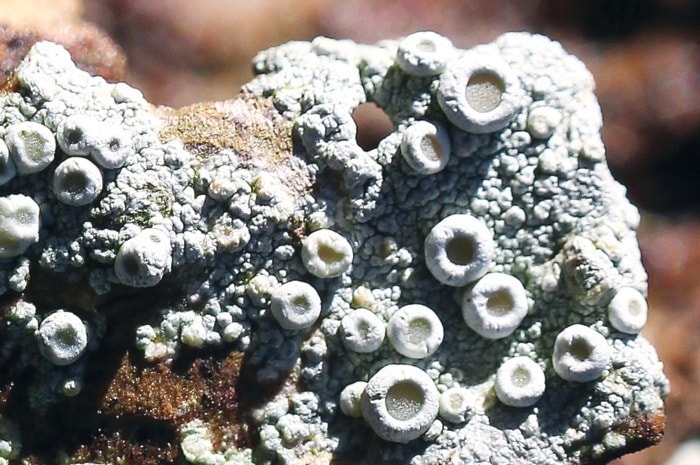Today’s ‘herbal healers,’ praise the benefits of Usnea to treat upper respiratory infections, and as a potent anti-bacterial medication. Usnea is a species of hanging hair lichen often known as witch’s hair or old man’s beard.Lichens don’t often pop up in everyday conversation, but that may soon change. Like the canary in a coal mine, lichens – which prefer pristine environments – have become an important tool for scientists who study pollution. Sensitive to airborne pollutants, lichens are a natural indicator of air quality, and can act as an early warning system for measuring air quality.Lichens are not plants; neither are they mosses; they are simply lichens, capable of deriving all they need from the environment, without roots or a vascular system. A lichen absorbs water and nutrients directly through its surface.Folks could be excused for thinking lichens are plants, as shrubby and leaf-like forms resemble gray-green plants. Crusty or dusty lichens grow on rocks in a rainbow of colours, and Usnea forms intricately branched, hanging filaments. While lichen life forms appear in many different shapes, they never form leafy stems, and do not attach with true roots. Lichens are formed in a mutually beneficial biological partnership between a fungus and another organism (green algae or cyanobacteria) which is capable of producing food by photosynthesis. In this way, the fungus shares the food energy.Lichens love winter, choosing to grow only when the thermometer drops, so late winter is prime time to go lichen hikin’. This is also their reproduction time. Fruiting bodies (spore-producing) on lichen may resemble chocolate chips, tiny saucers, miniature goblets or even lipstick-stained clubs. Long ago, the ever-resourceful First Nations people were among the first to recognize and utilize the antibiotic properties of lichen. They used this absorbent material as wound dressing and diaper material. Lacking ammonia, they soaked lichen in urine to create colourful dyes for clothing, basketry and art. According to lichenologist Trevor Goward, “lichens are the most overlooked of the conspicuous organisms in the natural landscape.” Nevertheless, our world would be poorer without them. In the far north, reindeer moss and arboreal lichen constitute 90 per cent of the caribou food source, while early explorers boiled leafy lichens as famine food. Over 50 bird species choose lichen to soften their nests. And lichen extracts, with their antibiotic properties, remain popular ingredients in herbal remedies. Find Vancouver Island backyard bird posters at Coho Books and Campbell River Museum. E-mail Christine at: wildernesswest@shaw.ca.
